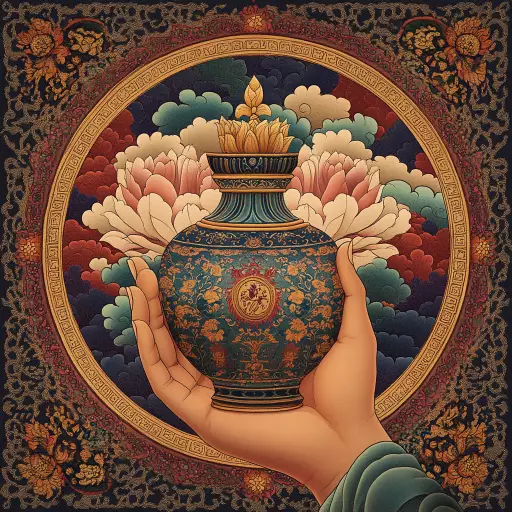Explore the Best AI Image Gallery

AI: The Designers New Muse - Reshaping the Creative Landscape
The world of graphic design is undergoing a fascinating metamorphosis, driven by the rapid advancements in artificial intelligence (AI). This powerful technology is no longer confined to the realm of science fiction; its actively reshaping how designers conceptualize, create, and execute their work. From generating captivating visuals to streamlining tedious tasks, AI is proving to be a valuable collaborator for designers of all levels.
AI-Powered Design Tools: A Revolution in Creativity
A plethora of AI-powered design tools are emerging, empowering designers with unprecedented capabilities:
- Logo and Brand Identity Generation: AI algorithms can analyze market trends, target audiences, and even generate unique logo concepts based on specific requirements.
- Image and Asset Creation: Tools powered by Generative Adversarial Networks (GANs) can create stunning visuals, from realistic photographs to abstract art, based on textual prompts or existing images.
- Website and UI/UX Design: AI can assist in designing user-friendly interfaces, suggesting layouts, color palettes, and even interactive elements that enhance the user experience.
The Benefits of Embracing AI in Design
Integrating AI into the design process offers numerous advantages:
- Increased Efficiency: Repetitive tasks like resizing images or creating basic layouts can be automated, freeing up designers to focus on more creative and strategic aspects.
- Enhanced Creativity: AI tools can act as a source of inspiration, generating novel ideas and pushing the boundaries of conventional design.
- Personalized Experiences: AI can analyze user data to create personalized designs that cater to individual preferences and needs.
Ethical Considerations in AI-Driven Design
While the potential benefits are undeniable, its crucial to address the ethical implications of using AI in design:
- Bias and Fairness: AI algorithms are trained on vast datasets, which can inadvertently perpetuate existing societal biases. Designers must be vigilant about identifying and mitigating such bias in AI-generated outputs.
- Copyright and Ownership: The question of who owns the copyright to AI-generated designs remains a complex legal issue. Clear guidelines and regulations are needed to ensure fair attribution and intellectual property rights.
- Transparency and Accountability: Designers should strive for transparency in their use of AI, clearly communicating how it is employed in the design process. Its also important to establish mechanisms for accountability when AI-generated outputs lead to unintended consequences.
Future Trends in AI and Graphic Design
The future of AI in graphic design is brimming with exciting possibilities:
- More sophisticated generative models: AI will become even better at creating realistic and creative visuals, pushing the boundaries of whats possible.
- Seamless human-AI collaboration: Designers will increasingly work alongside AI as partners, leveraging their respective strengths to create innovative designs.
- AI-powered design education: AI tools will be integrated into educational programs, providing students with hands-on experience and personalized learning opportunities.
Conclusion
AI is undoubtedly transforming the landscape of graphic design, offering both immense potential and ethical challenges. By embracing this technology responsibly and fostering a collaborative approach between humans and machines, designers can unlock new creative frontiers and shape the future of visual communication.



](https://images.ai-img.art/thumbnails/150/51c93500396faff4e7fa8b42bc68033067b16b2230e3496e95c482a581ff0fe9.webp)









](https://images.ai-img.art/thumbnails/150/9d51c5e673b4f2068b7b01abc35425a06f173b76303adf9ad29ca14302c25b18.webp)




![**Representation: A teenager smiling while thinking about a friendly dog, a comic-style thought bubble with a friendly dog inside. Graphic style: Line drawing, cartoon style, influenced by Franco-Belgian comics, thick black lines, simplified design, vector, black and white only, in the style of Keith Haring or the French comic strip "Alinéa". [IMPORTANT]: A single continuous line extending from one side of the image to the other, minimalist, strong outlines, line drawing, without lifting the hand, ultra-simplified, no shading, entirely white image, drawing created in the center of a sheet of paper. --ar 16:5** - <@627984126871470085> (fast)](https://images.ai-img.art/thumbnails/150/6fc850f638e3dee0c4b121acecad2c8419e02bdeac7f871d625f1003c1c3abe1.webp)




](https://images.ai-img.art/thumbnails/150/157712d76865d557120f9baf988de3d0525225295a2789c89bf2c4a5a96a03d1.webp)



![**Representation: A dog acting as a private tutor to a child. The dog holds a ruler in its paw and stands at the blackboard to explain a dog diagram to the child. Graphic style: Line drawing, cartoon style, influenced by Franco-Belgian comics, thick black lines, simplified design, vector, black and white only, in the style of Keith Haring or the French comic strip "Alinéa". [IMPORTANT]: A single continuous line extending from one side of the image to the other, minimalist, strong outlines, line drawing, without lifting the hand, ultra-simplified, no shading, entirely white image, drawing created in the center of a sheet of paper. --ar 16:5** - <@627984126871470085> (fast)](https://images.ai-img.art/thumbnails/150/7a854648a81e51241dcca8d24dd6e3bfcf07ad1df51baf401c9b729f4cf411fa.webp)

![**Representation: A dog acting as a private tutor to a child. The dog holds a ruler in its paw and stands at the blackboard to explain a dog diagram to the child. Graphic style: Line drawing, cartoon style, influenced by Franco-Belgian comics, thick black lines, simplified design, vector, black and white only, in the style of Keith Haring or the French comic strip "Alinéa". [IMPORTANT]: A single continuous line extending from one side of the image to the other, minimalist, strong outlines, line drawing, without lifting the hand, ultra-simplified, no shading, entirely white image, drawing created in the center of a sheet of paper. --ar 16:5** - Variations (Strong) by <@627984126871470085> (fast)](https://images.ai-img.art/thumbnails/150/f4e034998ccd869d8a061fd12017514fcd92210eb33d4222dc9b54716223f4dd.webp)














